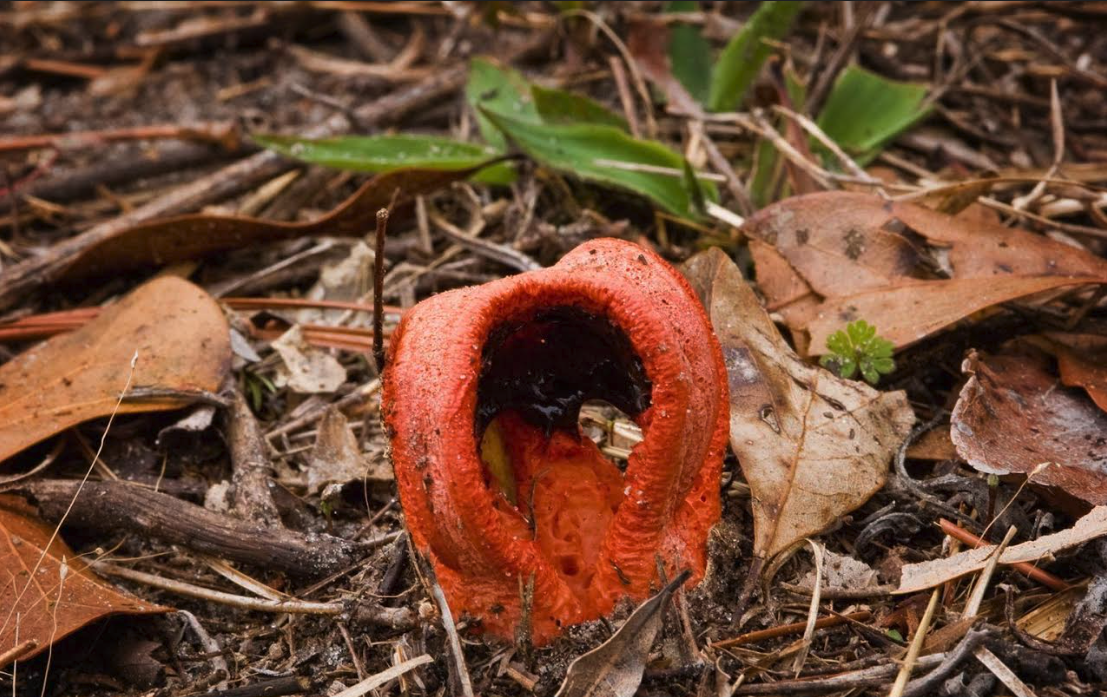Stinkhorn Mushrooms
go.ncsu.edu/readext?992562
en Español / em Português
El inglés es el idioma de control de esta página. En la medida en que haya algún conflicto entre la traducción al inglés y la traducción, el inglés prevalece.
Al hacer clic en el enlace de traducción se activa un servicio de traducción gratuito para convertir la página al español. Al igual que con cualquier traducción por Internet, la conversión no es sensible al contexto y puede que no traduzca el texto en su significado original. NC State Extension no garantiza la exactitud del texto traducido. Por favor, tenga en cuenta que algunas aplicaciones y/o servicios pueden no funcionar como se espera cuando se traducen.
Português
Inglês é o idioma de controle desta página. Na medida que haja algum conflito entre o texto original em Inglês e a tradução, o Inglês prevalece.
Ao clicar no link de tradução, um serviço gratuito de tradução será ativado para converter a página para o Português. Como em qualquer tradução pela internet, a conversão não é sensivel ao contexto e pode não ocorrer a tradução para o significado orginal. O serviço de Extensão da Carolina do Norte (NC State Extension) não garante a exatidão do texto traduzido. Por favor, observe que algumas funções ou serviços podem não funcionar como esperado após a tradução.
English
English is the controlling language of this page. To the extent there is any conflict between the English text and the translation, English controls.
Clicking on the translation link activates a free translation service to convert the page to Spanish. As with any Internet translation, the conversion is not context-sensitive and may not translate the text to its original meaning. NC State Extension does not guarantee the accuracy of the translated text. Please note that some applications and/or services may not function as expected when translated.
Collapse ▲The caller explained that they had these alien-looking, pink things that resembled the pi sign. I said, “The what sign, the peace sign?” They said you know, the pi sign, like math. Then it clicked for me, “Oh…pi, like 3.14”!
I have to say, I was intrigued and quite puzzled at the same time. What in the wide world of sports could this be? My next step was to ask for pictures and then of course I followed up with a home visit. By the time I got there, everything had dried up but there were these little dragon egg-looking structures left behind. There was no doubt this was some type of mushroom but what? These particular mushrooms resembled the pi sign having a top and two orangish-pinkish legs with what looked like octopus suction cups on them. This was the tell-tale sign that these were octopus or column stinkhorns (Clathrus columnatus).

Column Stinkhorn (Clathrus columnatus)
So what are mushrooms anyway? They are the fruiting bodies of some types of fungus. Just like the fruit that we love so much contains seeds, mushrooms are reproductive structures that contain the spores. There are multiple types of stinkhorns but they all have one thing in common, they stink. The smell is like that of rotting flesh. The reason they stink is to attract flies to them. The flies then get covered in a wet slime, containing spores (like seeds) of the fungus, and disperse them everywhere they go. Most fungal spores are dispersed through wind so these are actually a little special.
There are several types of stinkhorns that we may run across in our lawns and mulch beds. In addition to the column stinkhorn, there is another that will be pink to orange in color with a brown cap. However, the cap on these is not distinct like most mushrooms because of their spore dispersal mechanism. This is the elegant stinkhorn (Mutinus elegans) although it smells anything but elegant! The last one that I typically see, and I confess, I am no mushroom identification specialist, is Ravenel’s stinkhorn (Phallus ravenelii). This one has a light tan colored stalk with a brown cap that is a bit more pronounced than the elegant stinkhorn.
Most folks report that they will be able to smell them before they see them. The stench is undeniable and can be cause for alarm until they are found. Unfortunately, according to an NC State University Plant, Disease, and Insect Clinic blog post, there is no way to get rid of them. Fungicides and disinfectants are of no use against them. Removing the stinkhorns as soon as they are seen will help in removing the smell. They do not harm our plants trees, shrubs, or bedding plants. Turning under or replacing hardwood mulch and then replacing it with composted pine bark mulch may help. However, like most fungi in nature, it is there and just waiting for the right conditions to fruit!
If you are having trouble with growing in your home landscape, call the Extension office at (252)946-0111 or email Gene Fox at gene_fox@ncsu.edu. Keep an eye on our website or the Beaufort County Master Gardener Facebook page for upcoming classes and events. Mark your calendars for our Totally Tomatoes class coming up on April 13th and our Extension Master Gardener Plant Sale on April 20th. We will have over 1,000 vegetable seedlings for sale from 9:00-11:00 or until supplies last! Until then, Happy Gardening!



